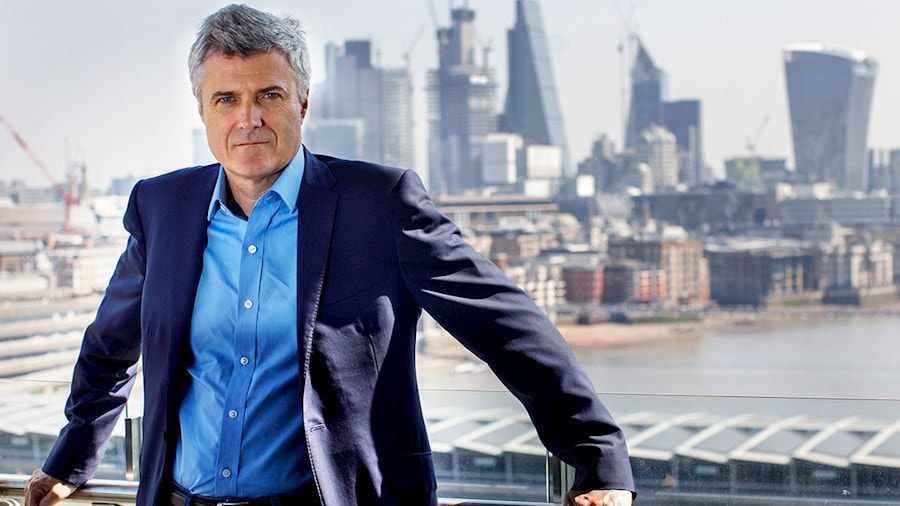As the advertising world grapples with shifting consumer behaviors and economic uncertainty, WPP’s Chief Executive, Mark Read, is doubling down on artificial intelligence and a streamlined agency structure to chart the company’s future. In his latest annual statement, Read outlines an ambitious vision in which AI-fueled marketing and creative excellence redefine industry standards, even as macroeconomic headwinds and a turbulent Chinese market challenge growth. India is not mentioned in Read’s statements.
Read more: CCI raids on media cartel: A week later, Ad agencies still in the dark
Industry transformed by AI
At the heart of Read’s strategy is WPP Open, the company’s proprietary AI-powered marketing platform. The system has become an increasingly indispensable tool, helping WPP craft campaigns with unprecedented efficiency and precision. With major clients like Google, IBM, L’Oréal, and The Coca-Cola Company adopting the platform, WPP Open has emerged as a key differentiator in an industry surpassing $1 trillion in annual revenue for the first time.
“AI is touching every single aspect of how we work,” Read asserts. “It’s augmenting creativity, increasing productivity, and unlocking new levels of media sophistication.”
To cement its technological leadership, WPP is increasing its investment in AI and data-driven marketing tools, raising its commitment from £250 million in 2024 to £300 million in 2025. The expansion of WPP Open’s capabilities—spanning audience testing, commerce activation, and media planning—has contributed to major client wins, including Amazon, Unilever, and Johnson & Johnson.
The financial reality: strong margins, slow growth
Despite the promising technological advances, WPP faces real financial challenges. The company’s top-line revenue fell by 1.0% in 2024, impacted by client losses, weaker discretionary spending, and difficulties in China. Read acknowledges that recovery will take time, expecting improvement in the second half of 2025 as the company’s strategic changes take effect.
“While we are cautious about the macroeconomic environment, our structural actions are setting the foundation for stronger growth,” Read explains. The company’s tighter operational focus has yielded efficiency gains, bolstering operating margins and improving cash flow, the statement notes.
A significant component of WPP’s restructuring has been the simplification of its agency ecosystem. The consolidation of its business into six primary networks – AKQA, Burson, GroupM, Hogarth, Ogilvy, and VML – has helped streamline offerings, improve collaboration, and drive new business performance. Meanwhile, the company’s divestment from FGS Global has sharpened its focus on core operations.
A changing media and brand landscape
The evolving role of brands in today’s media landscape presents both opportunities and challenges for WPP. The company’s work has been widely recognized, with Unilever named Creative Marketer of the Year at Cannes Lions and Coca-Cola winning Creative Brand of the Year for the first time in its history. GroupM, WPP’s media arm, also emerged as the leading media group at the festival.
Yet, Read acknowledges the growing complexity of brand positioning amid shifting social and political dynamics. In today’s contested public arena, brands must navigate competing audience expectations with care, he notes. WPP, he insists, remains committed to fostering a culture of inclusivity and ensuring that its workforce reflects the diversity of the global consumers its clients seek to engage.
Read more: WPP drops Diversity, Equity, and Inclusion language amid political headwinds
He adds, “Like all companies with operations in the United States, we are monitoring developments and keeping any implications for our business under ongoing review. We will continue to meet legal requirements in all our markets.”
Talent and technology
As AI reshapes the marketing landscape, WPP is investing heavily in upskilling its workforce. The company expanded its Future Readiness Academies in 2024, offering AI-focused training programs that have already seen 30,000 employees complete more than 108,000 lessons. Additionally, WPP’s partnership-driven credentialing initiative—with industry giants like Adobe, Google, and Microsoft—has resulted in 21,000 certifications for its employees.
Balancing the demands of hybrid work, WPP has also made a decisive shift back to in-office collaboration. Starting in April, most employees are expected to spend four days a week in the office—a move Read believes is essential for fostering creativity, mentorship, and cultural cohesion.
Looking ahead
With new leadership at GroupM and AI at the core of its strategy, WPP is positioning itself for a more competitive future. Read sees the convergence of AI, data, and creativity as the formula for success, enabling the company to deliver integrated marketing solutions at scale.
“Technology and AI are breaking down barriers between marketing disciplines,” Read says. “But at the core of it all, creativity remains our biggest advantage.”
As 2025 unfolds, WPP will seek to turn its AI investments and agency restructuring into tangible growth, proving whether its big bet on technology and integration can pay off in an increasingly fragmented advertising world.
